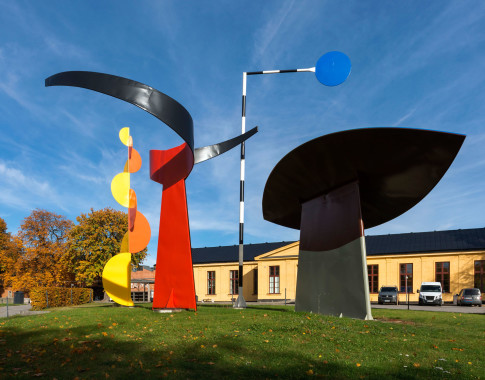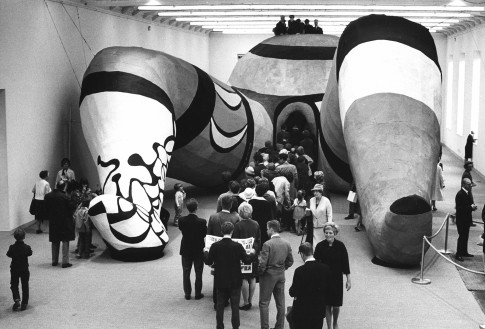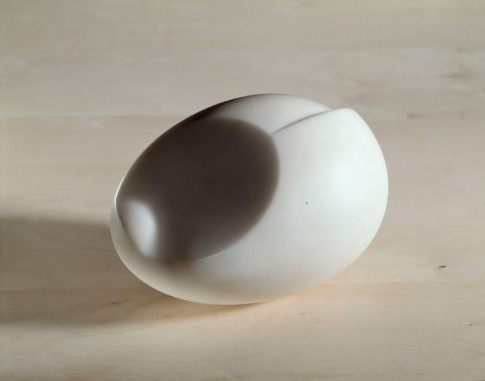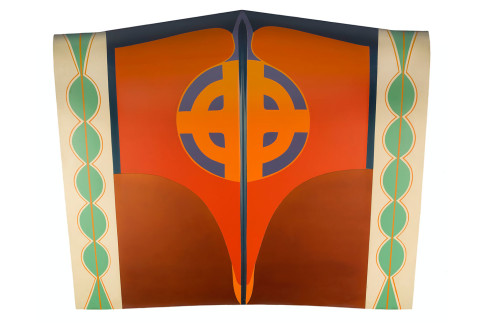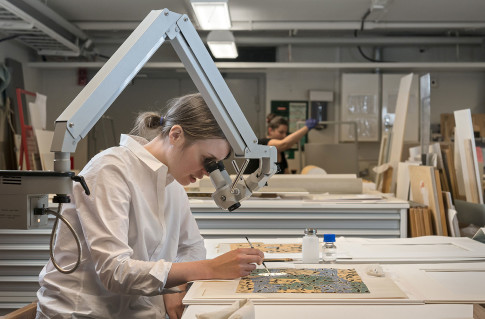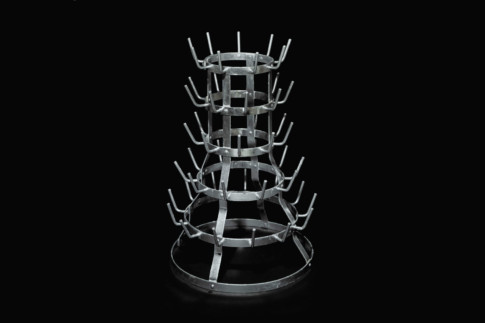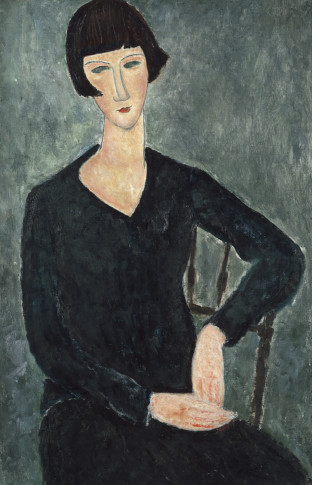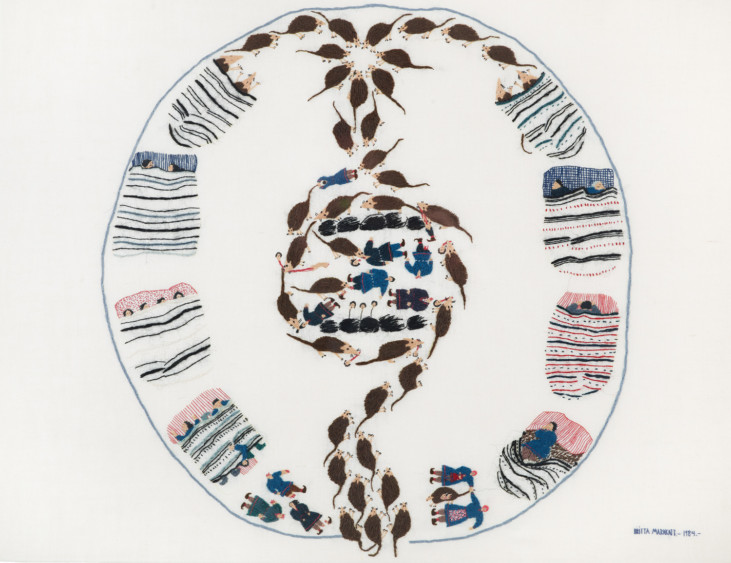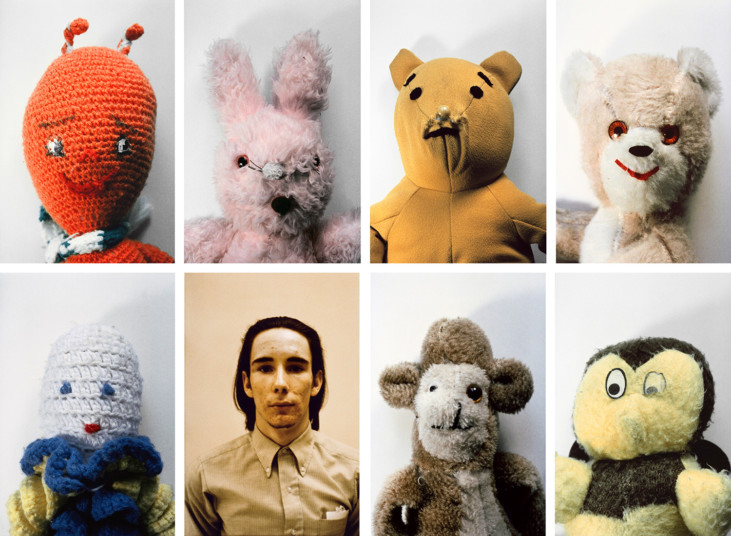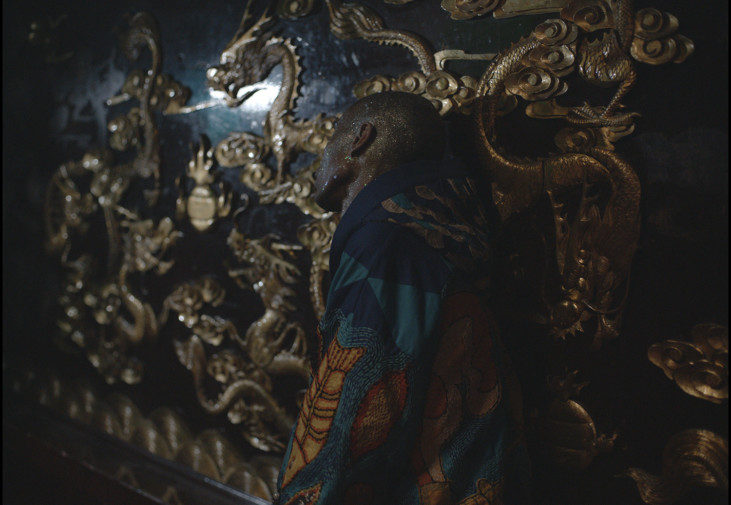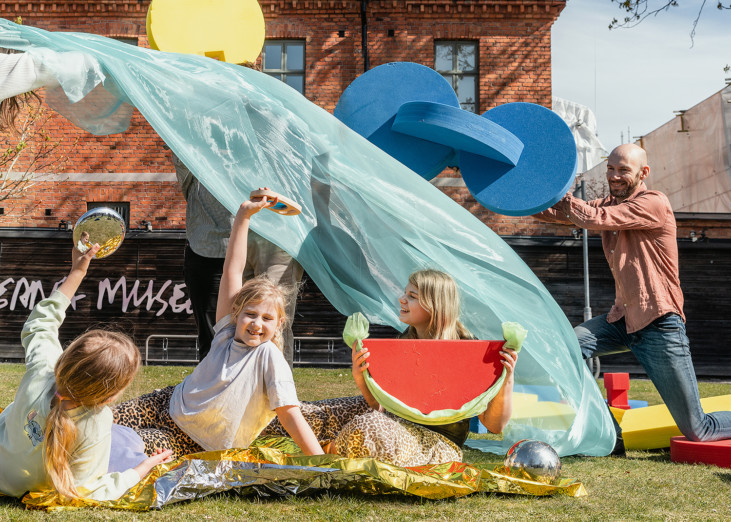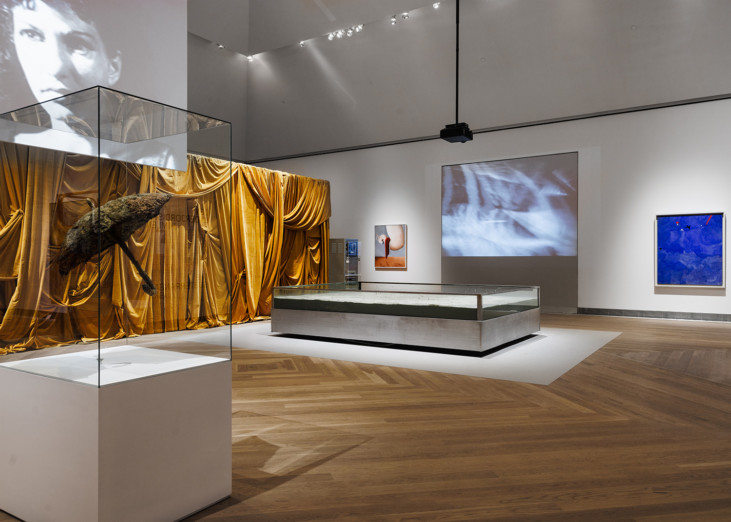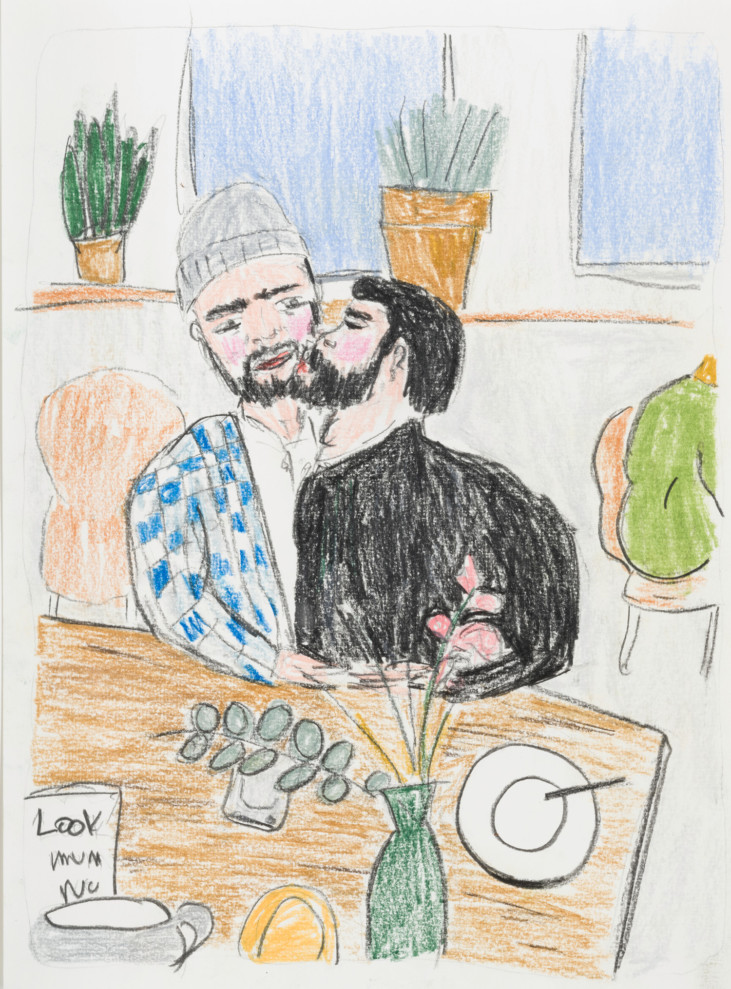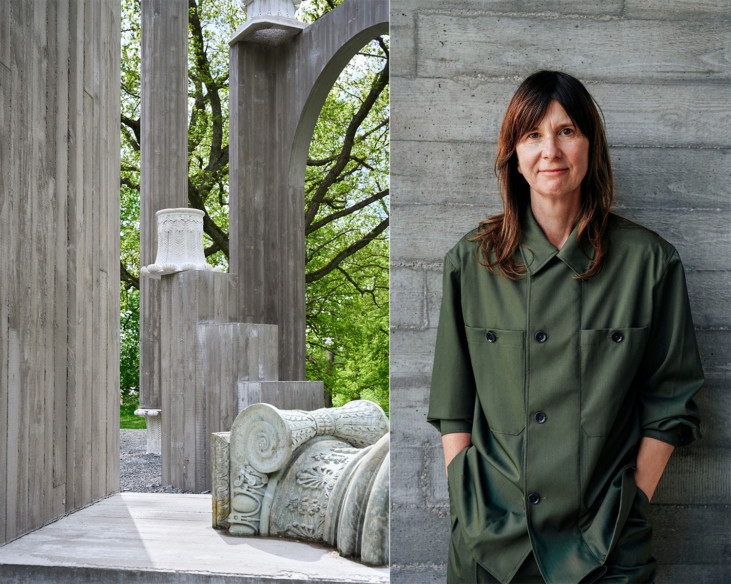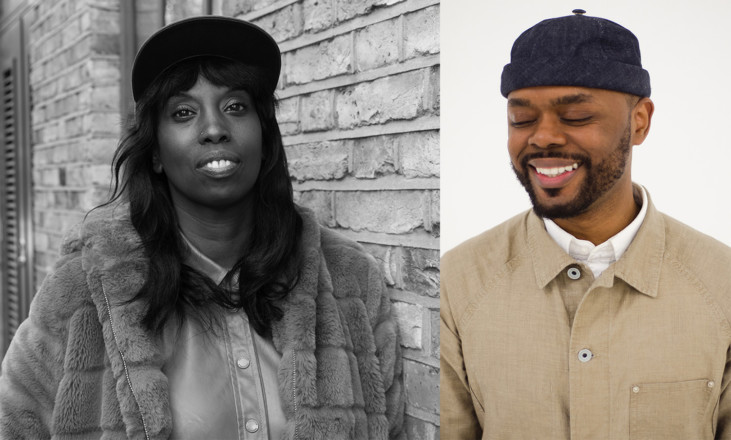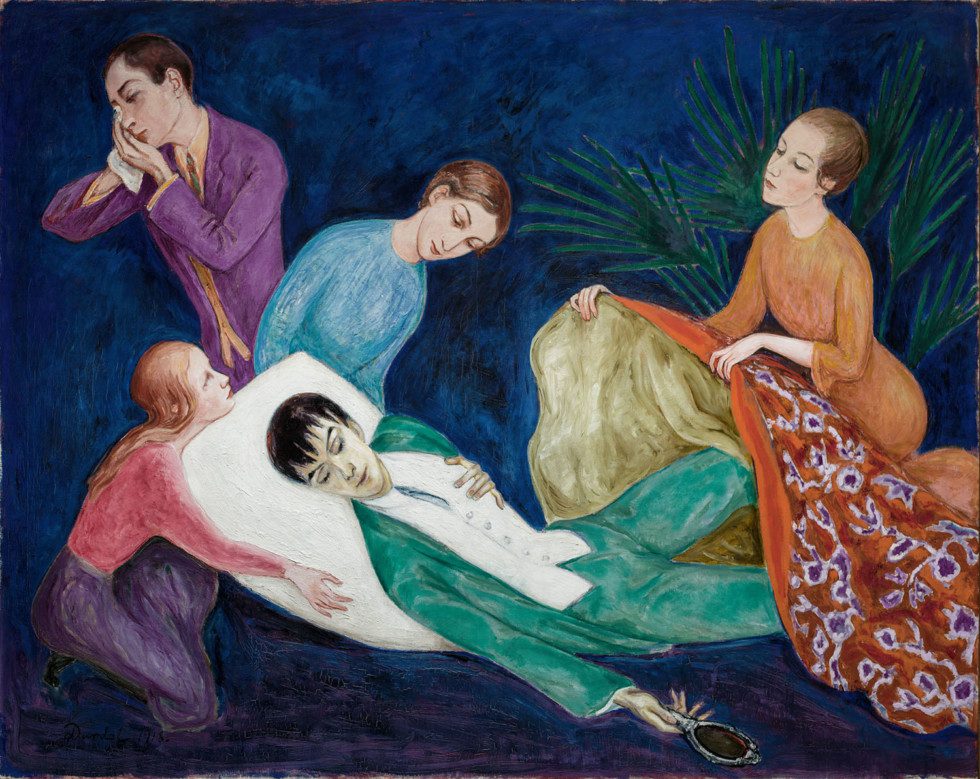
Nils Dardel, The Dying Dandy, 1918 Photo: Prallan Allsten / Moderna Museet
The Collection
Moderna Museet has one of Europe’s finest collections of modern and contemporary art. It includes key works by Pablo Picasso, Ljubov Popova, Salvador Dalí, Meret Oppenheim, Robert Rauschenberg, Donald Judd and Irving Penn, along with works by contemporary practising artists.
The Moderna Museet collection comprises some 6,000 paintings, sculptures and installations, 25,000 watercolours, drawings and prints, 400 art videos and films, and 100,000 photographs (from the birth of photography to today).
Moderna Museet’s new collection display
Moderna Museet’s new collection display presents artworks from the collection in shifting thematic exhibitions. Over time you will thus encounter even more works from Moderna Museet’s collection. Replacing the chronological format, these exhibitions offer close readings and new arthistorical perspectives.
See what is currently displayed in Stockholm: Search the Collection
Yet Another Morning
Meet about a hundred works by Swedish and international artists who draw. The exhibition “Yet Another Morning – Drawing in the Moderna Museet …
Drawing in the Moderna Museet Collection
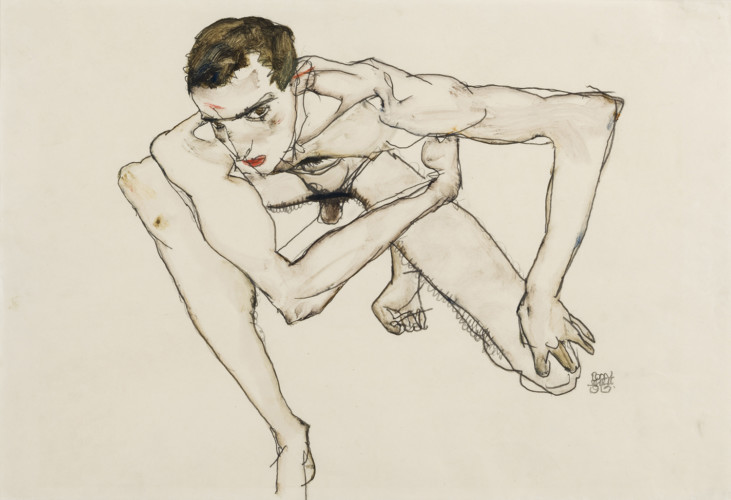
The Subterranean Sky
2024 marks one hundred years since the French poet and writer André Breton wrote the first Surrealist Manifesto. “The Subterranean Sky” is a deep …
Surrealism in the Moderna Museet Collection
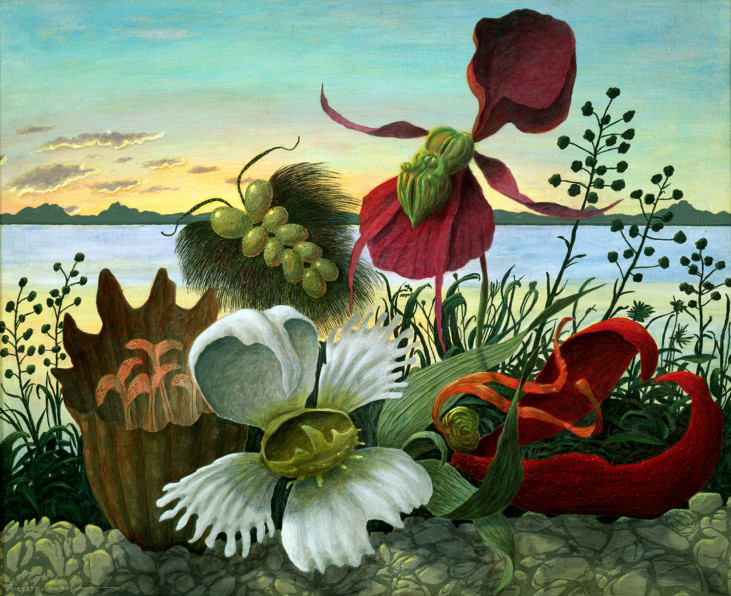
Pink Sails
Revisit the classics and discover new artists in the Swedish Modernism movement. The exhibition “Pink Sails – Swedish Modernism in the Moderna …
Swedish Modernism in the Moderna Museet collection
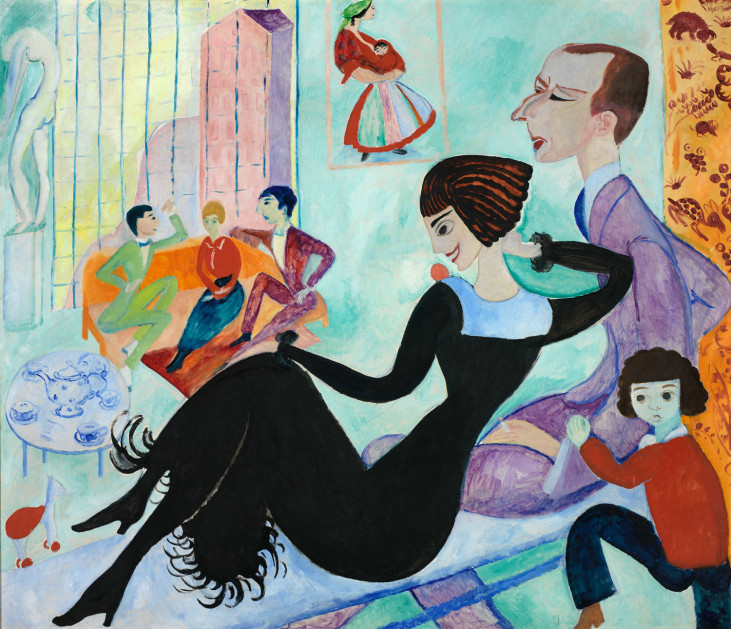
Monogram
Robert Rauschenberg’s iconic work “Monogram” is now exhibited in The Study Gallery. Experience our world-famous goat alongside other works and …
Robert Rauschenberg and the Moderna Museet Collection
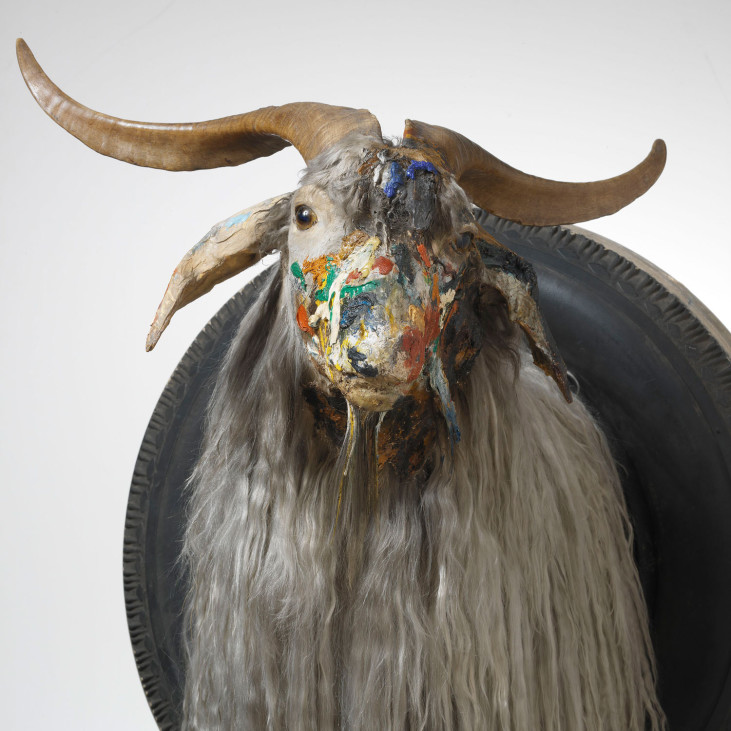
The Study Gallery
In the Study Gallery, you can request screens filled with works of art from the Moderna Museet collection. Our museum hosts will help you choose a …
The Study Gallery
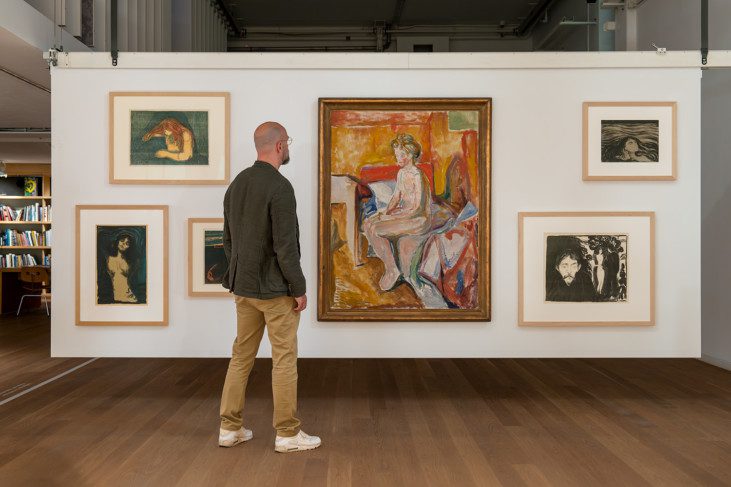
The breadth and depth of the collection increases
Since the start in 1958, Moderna Museet has been known for its close relationship to artists – Marcel Duchamp, for instance, signed several of his works in Stockholm towards the end of his life, and Andy Warhol had his first solo museum exhibition in Europe at Moderna Museet in 1968.
Thanks to focused collecting initiatives, the Museum has successfully increased the breadth and depth of its collection. Back in 1963, The Museum of Our Wishes was launched, transforming the Museum instantly into a leading European art institution; the government contributed SEK 5 million, for the acquisition of iconic works by Giacomo Balla, Francis Picabia, Kurt Schwitters, Giorgio de Chirico and many others. A few decades ago, the exercise was repeated, but this time spotlighting women artists only – works by Louise Bourgeois, Dorothea Tanning, Judy Chicago, Susan Hiller and others were added to the collection.
Swedish and Nordic art naturally have a prominent place in the collection, since Moderna Museet is the central national museum for 20th and 21st century Swedish art. Moderna Museet has the largest body of works by Öyvind Fahlström, Vera Nilsson, Siri Derkert, Dick Bengtsson and many other Swedish artists.
History
When Moderna Museet opened in the drill hall on Skeppsholmen, Stockholm, on 9 May 1958, discussions about starting a new museum for 20th century art …
History
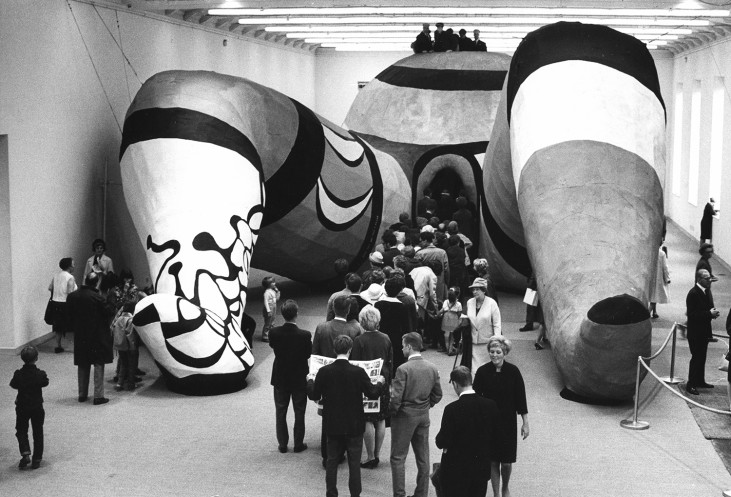
On Moderna Museet 1958–2008
With rich visual material, exhibition history, and a comprehensive bibliography, “The History Book. On Moderna Museet 1958–2008” is a …
The History Book
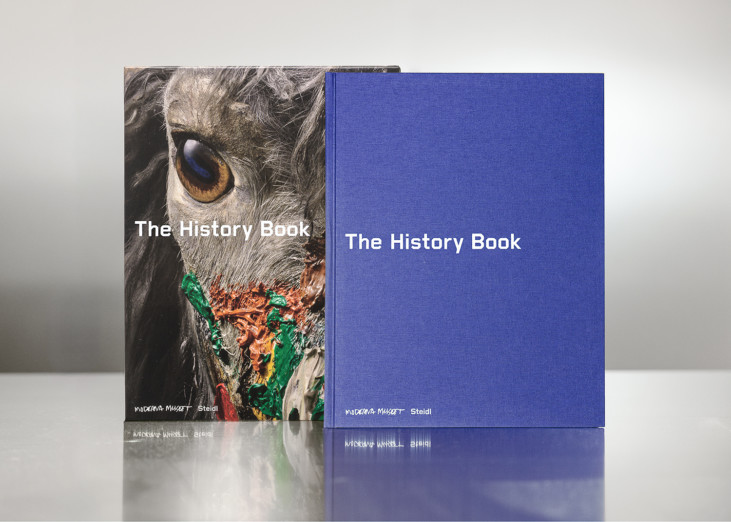
The Outdoor Collection is always open
Explore Moderna Museet’s outdoor collection – whenever you want! On Skeppsholmen, you can find sculptures by artists such as Alexander Calder, …
The Outdoor Collection is always open
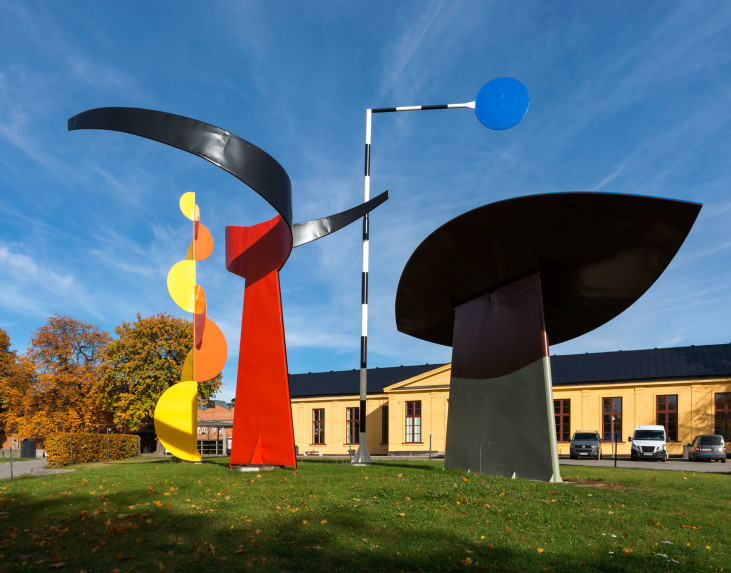
Swedish Acquisitions 2021
In 2021, Moderna Museet received a government allocation of SEK 25 million to support the Swedish arts sector during the covid-19 pandemic. Moderna Museet called this initiative “Swedish Acquisitions 2021”. The project resulted in 373 new works for the museum collection. They were made between 1962 and 2021 by 169 artists aged from 27 to 91 living in and outside Sweden and in Sápmi. The selection was shown in two exhibitions, “Insights” and “Matches”, in 2022.
Swedish acquisitions
In the exhibition “Swedish acquisitions: Insights”, 34 artists explore subjects such as states of mind and bodily experiences. This is the first …
Insights
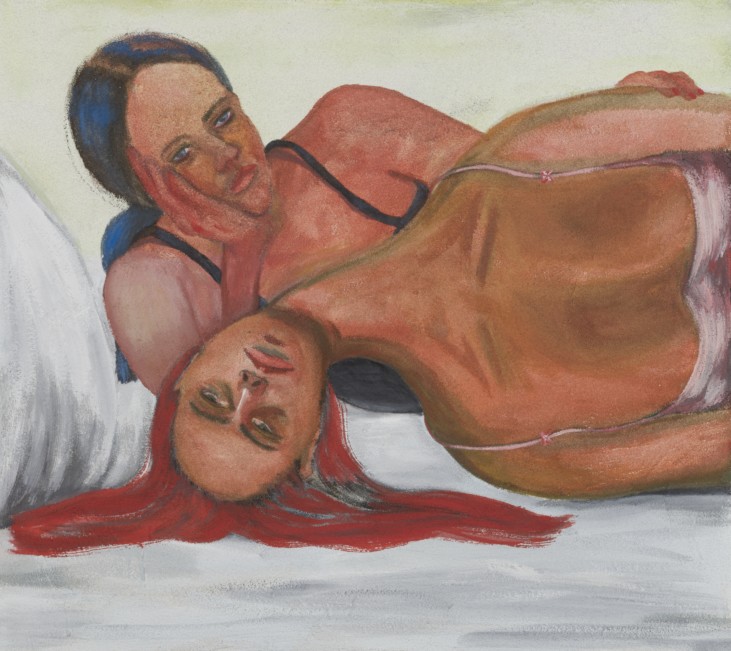
Swedish acquisitions
In the groupshow “Swedish acquisitions: Matches” you will encounter about 40 works of art that were purchased last year for Moderna …
Matches
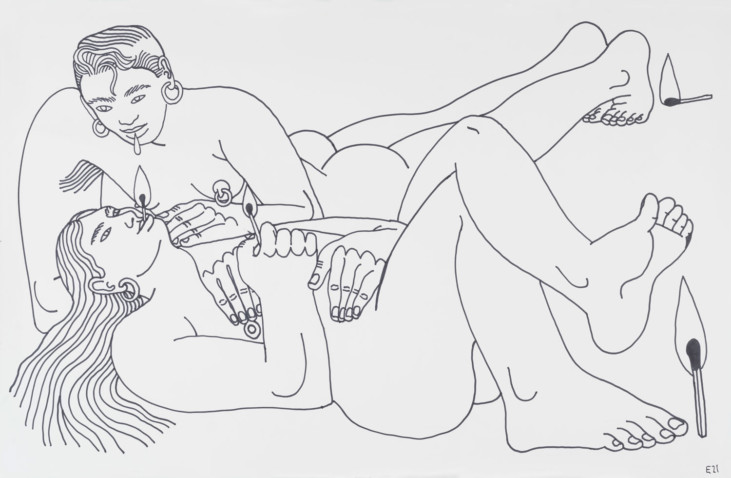
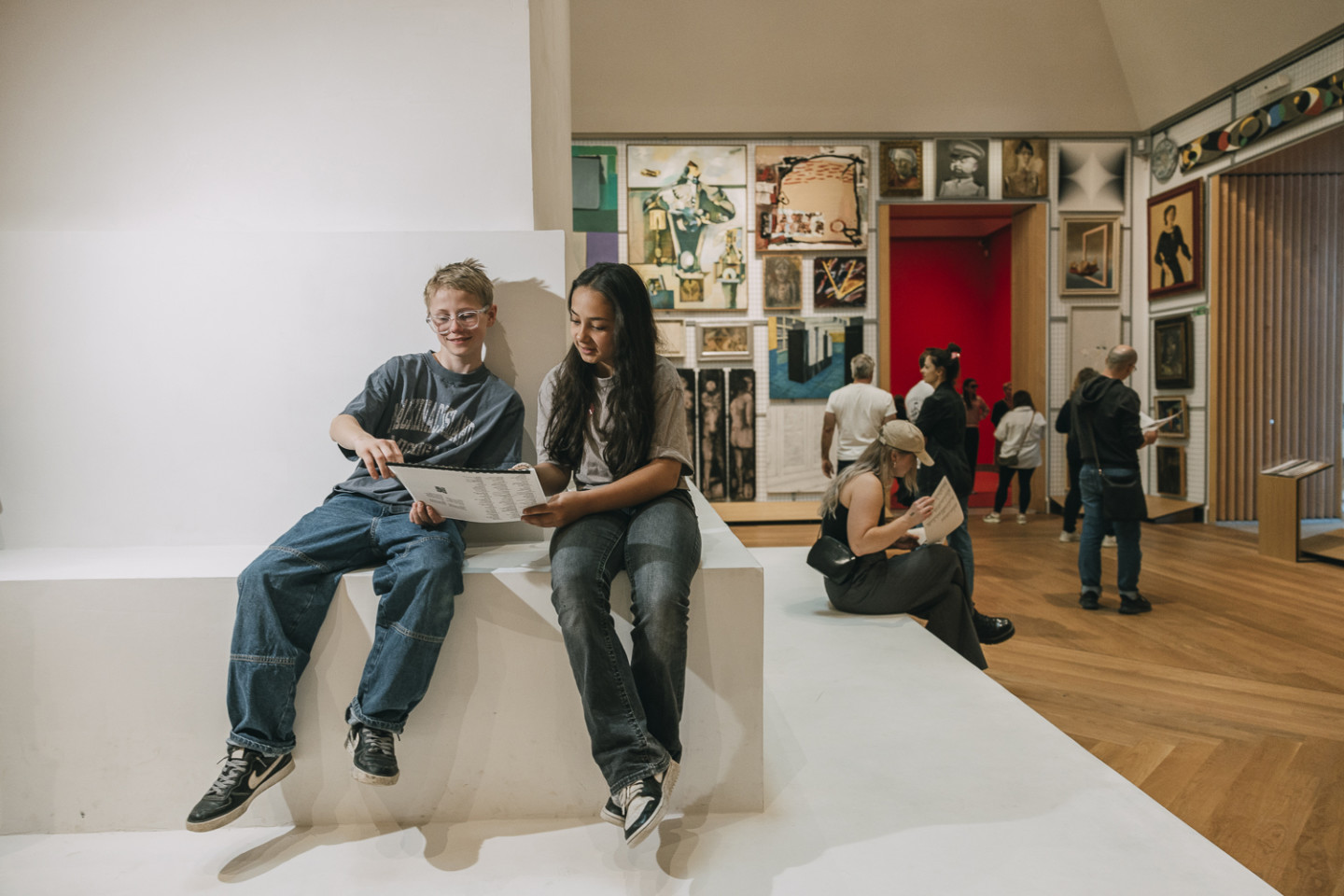
Swedish and Nordic Art
The Swedish section of the Moderna Museet collection currently comprises some 4,000 works, while other Nordic artists account for some 400 works. Moderna Museet has the world’s finest collection of art from our region, with a unique breadth and depth. It includes the most famous works of popular artists such as Ivan Aguéli, Vera Nilsson, Sven X-et Erixson, Nils Dardel, Siri Derkert and Sigrid Hjertén, along with the major body of works by Öyvind Fahlström and key works by other important artists, including Björn Lövin and Marie-Louise Ekman.
The resources for acquisitions of Swedish-Nordic art have varied. In the early 1900s, funds were earmarked for “purchasing works by Swedish artists”. Other works have come to the Museum thanks to targeted cultural policy undertakings, such as Konstnärshjälpen (an artist help fund) which bought art in 1922–26 with the proceeds from a lottery and substantial donations. One especially valuable addition was the collection of 150 works by Scandinavian artists donated to the Museum in 1958 by Föreningen för nutida konst (now Klubb Moderna).
Today, the Museum’s collection of Nordic art grows by various means. Contemporary art is bought from galleries or directly from the artists. In addition, the Museum is endeavouring constantly to add nuance to Swedish art history, for instance by acquiring more works by Swedish women artists for the early part of the collection.
International Art
Moderna Museet’s international collection of paintings, sculptures and installations has grown gradually through purchases and generous donations, from the early 1900s to today. The Museum of Our Wishes and the more recent drive to address the gender imbalance have contributed greatly towards making Moderna Museet one of the leading art museums. This position was further enhanced by the donation made in connection with the exhibition New York Collection 1973, when some 30 works by artists such as Ellsworth Kelly, Claes Oldenburg and Lee Bontecou suddenly reoriented the Museum from its focus on French art into a veritable Mecca for American pop art.
The early 20th century art scene was dominated by Paris, which is reflected in the remarkable collection of cubism, dada and surrealism, represented by artists such as Georges Braque, Juan Gris, Francis Picabia and René Magritte. Donations by art collectors, including Rolf de Maré and Gerard Bonnier, have been crucial, adding works by Joan Miró, Constantin Brancusi, Yves Klein and others to the collection. Key works by these and other artists are often lent to other museum exhibitions all over the world.
The Russian avant-garde has a special position in Moderna Museet. Alexandra Ekster, Vladimir Tatlin, Kazimir Malevitj and Alexandr Rodtjenko are a few of the artists who are represented. The Museum’s collection of German-speaking artists spans from Ernst Ludwig Kirchner’s most important model portrait and a complete series of Paul Klee’s calligraphy-like paintings, to Gerhard Richter’s famous Bach Suite and Rosemarie Trockel’s multifaceted objects.
As a selection criteria, geography is not a particularly useful starting point when sourcing art, even if museums often categorised their collections according to nationality in the previous century. In an era when we no longer see a dominating centre for art, it is natural for Moderna Museet to review its own history in the light of new knowledge in the wake of globalisation. Important acquisitions have therefore been made in recent years of Doris Salcedo, Yinka Shonibare, Mona Hatoum, Ai WeiWei and others. The international emphasis has successively shifted from Paris and New York and now encompasses the whole world.
Moving Images
Moderna Museet’s collection of moving images comprises some 400 works in the form of films and videos. Most of these works were acquired after 1980, when the film series “The Pleasure Dome”, featuring American experimental film from 1939–1979, was shown at the Museum. The works were selected by filmmaker Jonas Mekas in collaboration with Claes Söderquist, and works by several influential avant-garde filmmakers, including Stan Brakhage, Robert Breer and Owen Land were purchased in connection with the series.
Early on, however, films were screened as a vital element in establishing Moderna Museet on Skeppsholmen as an innovative, interdisciplinary institution. In 1955, Pontus Hultén started an association for experimental film at the Eriksbergsbiografen cinema, and its 500 members were transferred to Moderna Museet when he became its director. The opening exhibition of Pablo Picasso’s “Guernica” in the drill hall in 1958 was followed by the avant-garde film festival “Apropos Eggeling”, featuring Viking Eggeling’s “Diagonal Symphony” (1922), today an acknowledged art film classic.
Other important events were the exhibitions Movement in Art (1961), Niki de Saint Phalle’s and Jean Tinguely’s ”SHE” (1966), and Andy Warhol (1968), all of which included film in various ways in the exhibition concept. This early focus on film and film-related activities was further enhanced by Pontus Hultén’s friendship with New York-based Billy Klüver.
Today, old and contemporary works are acquired to expand the collection beyond its current emphases, which include American 1960s and ’70s film and Nordic video art from the 1990s. Moderna Museet has also commissioned works from several artists engaged in moving images, including Yinka Shonibare for “Un Ballo in Maschera” in the exhibition Fashination (2004), and Marysia Lewandowska and Neil Cummings in their project for the Museum’s 50th anniversary (2008).
Photography
Moderna Museet’s photography collection comprises some 100,000 works from the 1840s to today. The collection began with the purchase of Helmut Gernsheim’s Duplicate Collection and Helmer Bäckström’s Photography Collection in the mid-1960s.
The collection covers all the early photographic techniques, but consists mainly of black-and-white, so-called gelatin silver photographs by Swedish and international photographers. Since the early 1990s, more and more artists are producing photo-based art, and this has led to an increase in the collection of colour photography and digital images. The collection consists mainly of positive prints made or approved by the photographers themselves. But a small number of photographers, including Anna Riwkin, have also donated their entire oeuvres, including negatives. Moreover, Fotografiska Föreningen, Svenska Turisttrafikförbundet and Pressfotografernas klubb and a few other organisations have given the Museum their image archives, containing thousands of prints.
Drawings and Prints
Moderna Museet has some 12,000 drawings, 15,000 prints, 5,000 posters and 20 or so artist’s books in its collection. In addition, a number of plates and wood blocks are on the Museum’s inventory list and are treated as archive material. Most of the items were transferred to Moderna Museet from the Nationalmuseum in 1998, so that works by modern and contemporary artists would all be in one institution.
Acquisitions consist mainly of works by Swedish artists incorporated in the collection prior to 2000, including Siri Derkert, Axel Fridell, Karl Isakson, Vera Nilsson, Torsten Renqvist and Lennart Rodhe. They are represented with a large number of works, which means that their oeuvre can be studied in detail. A few of the more recognised Western artist in the collection of drawings and prints are Jean Fautrier, Edvard Munch, Pablo Picasso and Robert Rauschenberg.
Thanks to Pontus Hultén’s donation to Moderna Museet in 2005, the collection gained a large number of drawings and prints by Niki de Saint Phalle and other artists. Another major donation was King Gustaf VI Adolf’s collection of drawings, which was bequeathed to the Swedish government (the Nationalmuseum) in 1974. It consists of a representative selection of 20th-century graphic art.
Conservation
How are artworks preserved? How long can a painting survive? Will future generations be able to enjoy the art we are exhibiting in the museum today? …
Conservation
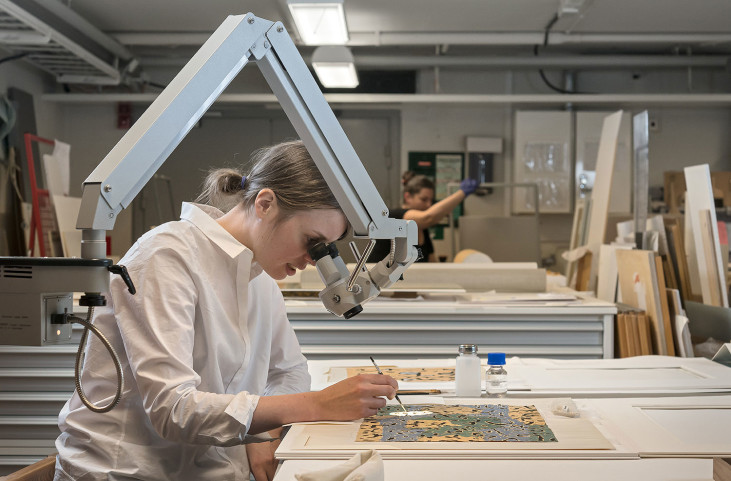
On research at Moderna Museet
Moderna Museet’s assignment includes conducting research, promoting understanding and interest in the field of modern and contemporary art, and the …
On research at Moderna Museet
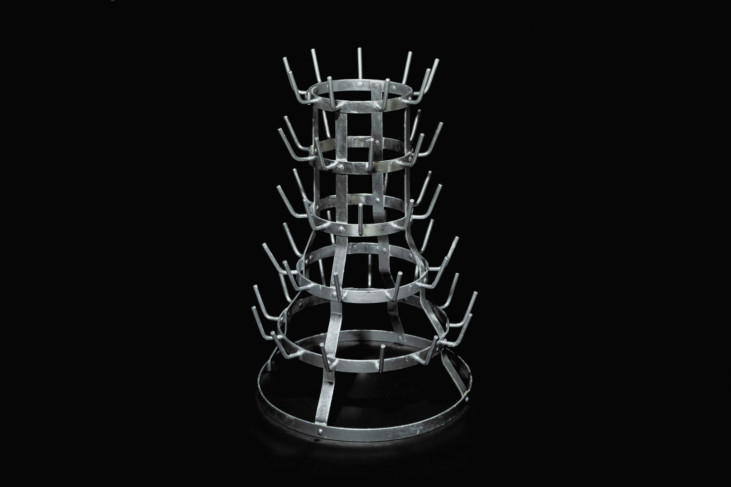
Provenance and restitution
Moderna Museet’s mission as a government agency includes preserving, cataloguing and scientifically processing information about the objects that …
Provenance and restitution
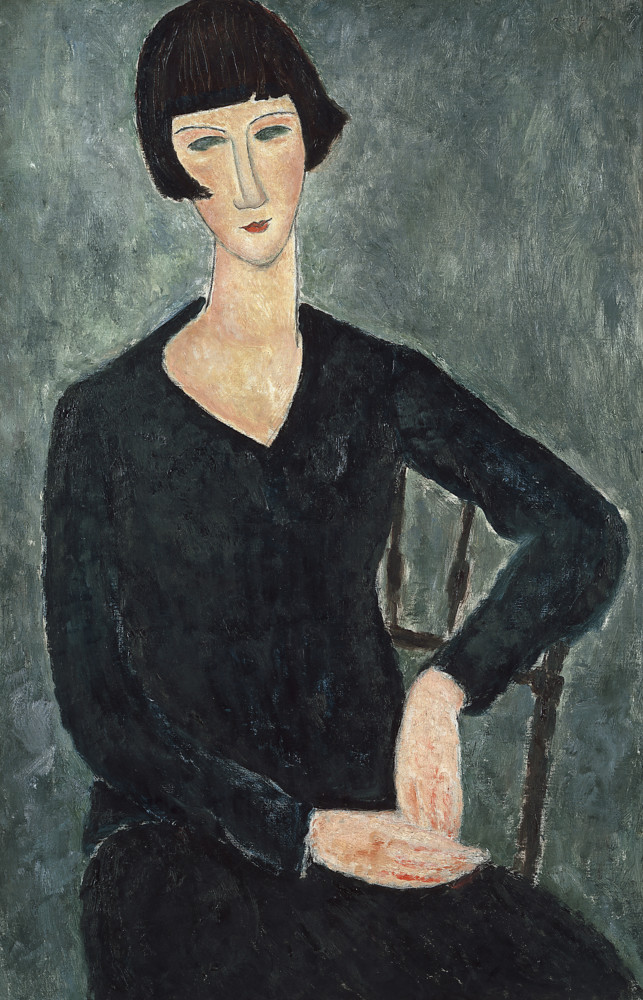
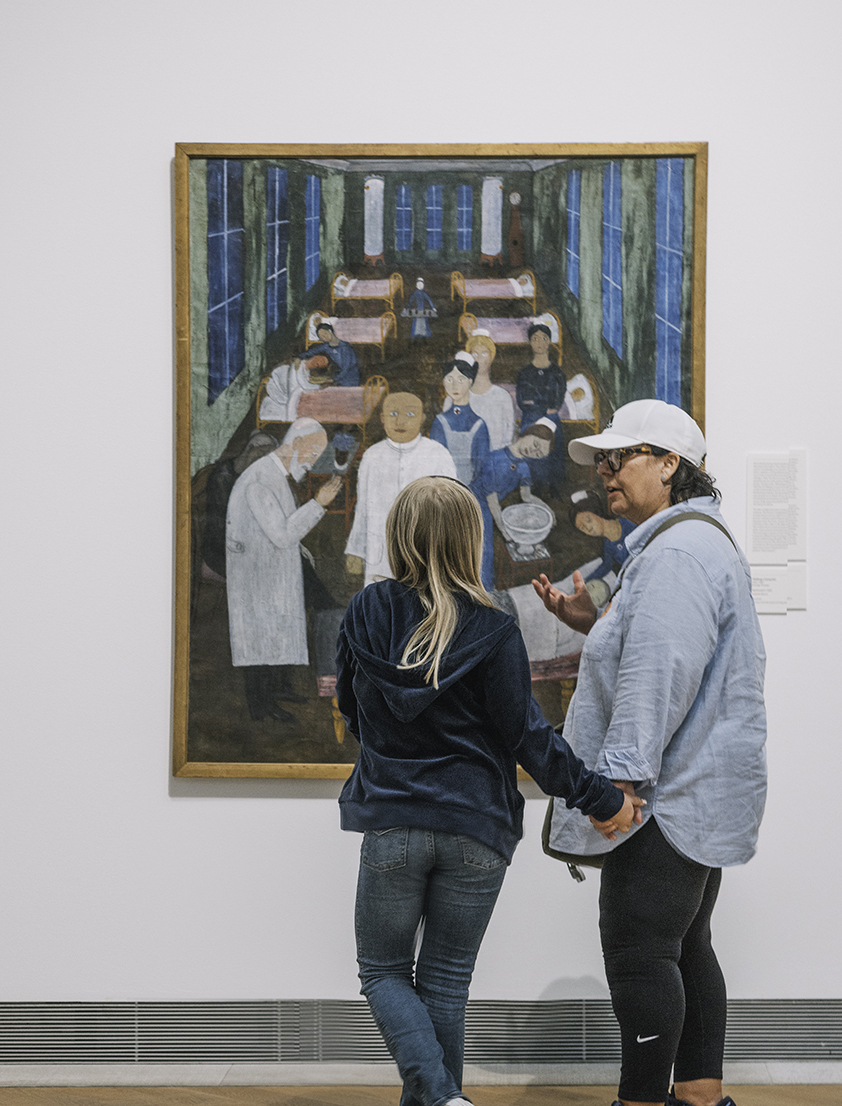
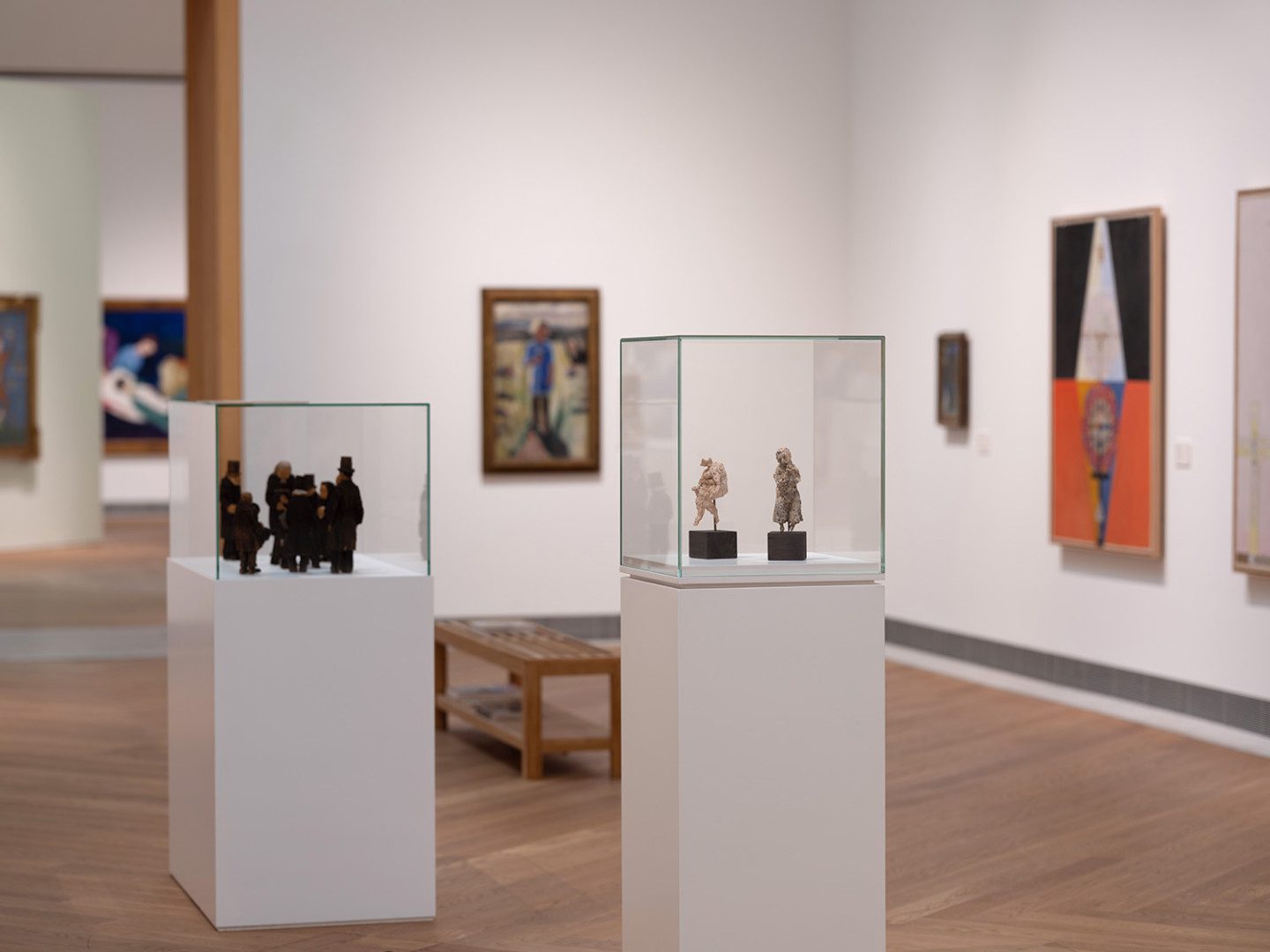
Published 27 January 2016 · Updated 20 February 2025

